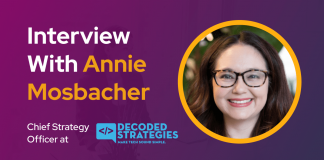Hi Abu, tell us about yourself and your background.
Hi, my name is Abu Yousuf, and I am based out of Bangalore, India. A failed start-up founder and Innovation enthusiast, I am keen on learning advancements, tools, and technologies that help solve niche business problems and optimize CX across industries (preferably in B2C environment).
Over the last 15 years, my career has transformed to a new-gen breed of CX practitioner, although the first half of my career was more focused on Data, Research & Insights roles that eventually helped me formulate and drive the CX Strategy and Engagement more successfully and meaningfully.
How did you start working in the customer experience space?
My CX journey started in 2013 when I joined Webenza, a Digital Media agency. Although I was not wholly engaged with the CX Delivery or Implementation, but working with different teams (including Strategy, Tech and Marketing teams), this actually helped me to understand the CX Building Blocks that matter and how can we leverage Customer Insights and Customer Journeys to drive effective Digital CxM Operations and Initiatives. Over the subsequent years, I realized that data-driven organizations are more optimistic and advanced in terms of their Digital CX footprints, progressions, and transformations.
Can you tell us a little bit about your current role?
Currently, I am heading the Digital Cx-OPS offerings globally at Tech Mahindra. The role helps me work with digital-focused enterprises across industries, strategizing their Digital Transformation Roadmaps, and keeping Digital CX at the core of the overall proposition.
I constantly evaluate and monitor the industry developments around Digital CX frameworks and try to adapt the methodologies, along with tools and technologies, that suit our paradigm of platform landscapes. Apart from our own IPs, we also work with industry leading solution providers across different and niche areas of focus, so that our clients are getting the best of the solutions deployed.
Furthermore, I always prefer to assess a company’s Digital CX maturity through our proprietary framework and methodology to understand their current landscape. Subsequently, we design the Digital CX Transformation Roadmap using new-age tools and technologies that fit the most.
How can companies better listen and understand their customer base?
The maturity and the technology adoption among customer-centric companies is now more well-established than ever. The importance of Customer Insights gathered from across Customer Journey Touchpoints is also well recognized and captured.
I strongly believe that Listening to the Customers is one of the key elements to design and offer better Customer Experience. To do that more effectively, companies need to establish an integrated and 360-degree approach so that every customer voice and action is counted. We can create a three-fold strategy by prioritizing Web, Social, and Mobile channels.
In the Web context, it’s not only about website visitors and traffic, but to also deep-dive in terms of monitoring their usage pattern and call-to-actions, etc. Understanding a visitor’s persona and demographics and then relating with complete journeys and touchpoints, gives an immense potential to create customer clusters and co-relate their online behaviors.
In the Social Media context, listening to customers across social media channels and understanding their intent, perception, sentiment, and persona gives a great potential to provide actionable insights. Social Listening has now been transformed, can provide businesses with real-time alerts and predictive analytics, and can help build communities and manage crises.
In the Mobile context, again there are wider opportunities to learn and adopt. Companies can not only identify the app issues and bugs but can also monitor the customer feedback in terms of reviews and ratings published across app stores.
Moreover, there are other emerging channels that need to be considered to build a 360-degree approach, including Customer Review Sites, Google Business Reviews, Customer Surveys, etc. to integrate the insights within the overall framework.
What are some companies that you think are doing an excellent job at customer experience, and why?
I think it would be unfair if I just pick some names that I think are providing a greater customer experience, as I know there are many such companies from across industries, who prioritize the CX at the highest level. The success stories emerge from the companies who realize the need for and create a connected eco-system within its business functions, including Customer Service, Customer Experience, Marketing, Product, Communication, etc.
Companies that have leveraged Conversational AIs on top of new-age Contact Centre solutions and feed the data back to the Marketing Automation platforms are moving faster in terms of providing best-in-class customer experience.
However, I feel it’s important to identify and highlight the companies that are acting as disruptors and enabling companies to significantly improve their CX. One such company I must name that is striking me every now and then, is Fast. I am quite fascinated about the way how Fast is changing the dynamics of the Online Shopping Experience by eliminating hassles and multiple steps and making it a 1-click checkout and login.
Many companies are currently undergoing digital transformation processes – what are your tips on a successful digital transformation?
Different strategists might have different views and their own ways of creating a successful Digital Transformation Roadmap. I have one too! Here are my takes on creating a successful Digital Transformation plan and how to execute it:
- Complete a thorough assessment of the company’s Digital Customer Experience Management maturity through a comprehensive framework;
- Understand the competitive landscape across Digital CX Building Blocks, such as Digital Assets (Website, Mobile Apps, Social Media Channels, Web Portal, etc.);
- Measure the effectiveness of existing Digital CxM processes and operations including Customer Care, Community Management, Targeted and Personalized Marketing Operations, etc.;
- Evaluate the Technology Stack and make it as minimalistic as possible;
- Adopt an integrated approach by connecting different business functions to leverage the data at scale (including Customer Care, Marketing, Product, Brand and Communication, etc.);
- While companies are focusing heavily on AI to improve their customer care operations, it is important to balance and develop a human-centric approach by leveraging AI holistically and not wholly replacing the human touch;
- Prioritize data-driven approaches and gather real-time, meaningful, and actionable insights from across customer touchpoints (web, social, mobile, etc.).
What are some CX solutions or tools that you’re keeping your eyes on right now?
My priority focus areas to drive enhanced Digital CX are as follows:
- Unified and Omnichannel CxM (non-voice): Sprinklr is my favorite bet in this segment along with Simplify360 and Khoros. These solutions are bringing unlimited possibilities through customizations and integrations to meet specific business requirements;
- Conversational AIs: Although some of the CxM solutions have the conversational AIs, there is a growing number of solutions in this segment that are creating values and helping companies improve CX. Some of the solutions that I am eyeing include – Yellow.ai, LivePerson, etc.;
- CPaaS and Video-based Communication: EnableX is one of the promising solutions in this space that I am watching closely and experimenting with their FaceAI capability to transform video-based communications, that would potentially lead to an improved CX;
- Social Listening & Analytics: One of my favorite areas that can provide a significant amount of insights that would potentially drive enhanced Brand Experience. My preferred choices in this segment include – TalkWalker, Brandwatch, and NetBase Quid.
What is your favorite CX metric?
Every Digital CxM operation and process has their own set of KPIs and Metrics. But from the overall success factors and monitoring perspective, I would pick the below metrics:
- Overall Sentiment: My top priority is always to understand the customer sentiment gathered from different channels including social media, app stores, customer review sites, etc. The fact is that a frustrated customer will always tend to express the dissatisfaction encountered by poor experience on either offline or online channels;
- CSAT and NPS: Still very prominent and my favorite too. CSAT and NPS help a company measure the short-term satisfaction and long-term happiness of its end customers respectively. But it is also critical to measure the CSAT and NPS from across varied sources and customer touchpoints to make it more holistic and comprehensive.






